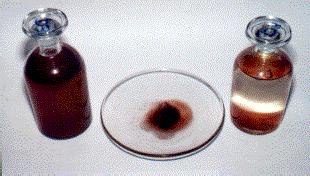-------------------------------------------------------------
- As You Like It : Act III, scene II
CORIN: The courtier's hands are perfumed with
civet.
TOUCHSTONE: Most shallow man! thou worms-meat, in respect of a
- good piece of flesh indeed! Learn of the wise, and
perpend: civet is of a baser birth than tar, the
very uncleanly flux of a cat. Mend the instance, shepherd.
CORIN: You have too courtly a wit for me: I'll rest.
-------------------------------------------------------------
http://www.etymonline.com/index.php?allowed_in_frame=0&search=flux wrote:
flux (n.) late 14c., "abnormally copious flow," from Old French flus "a flowing, a rolling; a bleeding" (Modern French flux), or directly from Latin fluxus (adj.) "flowing, loose, slack," past participle of fluere "to flow" (see fluent). Originally "excessive flow" (of blood or excrement), it also was an early name for "dysentery;" sense of "continuous succession of changes" is first recorded 1620s. The verb is early 15c., from the noun.
-------------------------------------------------------------
- King Lear : Act III, scene IV
KING LEAR: Take physic, pomp;
- Expose thyself to feel what wretches feel,
That thou mayst shake the superflux to them,
And show the heavens more just.
-------------------------------------------------------------
- Victor Hugo » The Man Who Laughs » Ch. XIV: Ortach
The operation is simple: first the flux, then the reflux; a wave advances, a billow returns.
In such cases the question of life and death is balanced thus: if the wave carries the vessel on the rock, she breaks on it and is lost; if the billow retires before the ship has touched, she is carried back, she is saved.
-------------------------------------------------------------
- John Donne XIV : MEDITATION.
If we consider eternity, into that time never entered; eternity is not an everlasting flux of time, but time is a short parenthesis in a long period; and eternity had been the same as it is, though time had never been. If we consider, not eternity, but perpetuity; not that which had no time to begin in, but which shall outlive time, and be when time shall be no more, what a minute is the life of the durablest creature compared to that! and what a minute is man's life in respect of the sun's, or of a tree?
-------------------------------------------------------------
- Women in Love : D.H. Lawrence: Chapter 13
She was palpitating and formless within the flux of the ghost life.
-------------------------------------------------------------
 The M81 Galaxy Group through the Integrated Flux Nebula
The M81 Galaxy Group through the Integrated Flux Nebula

